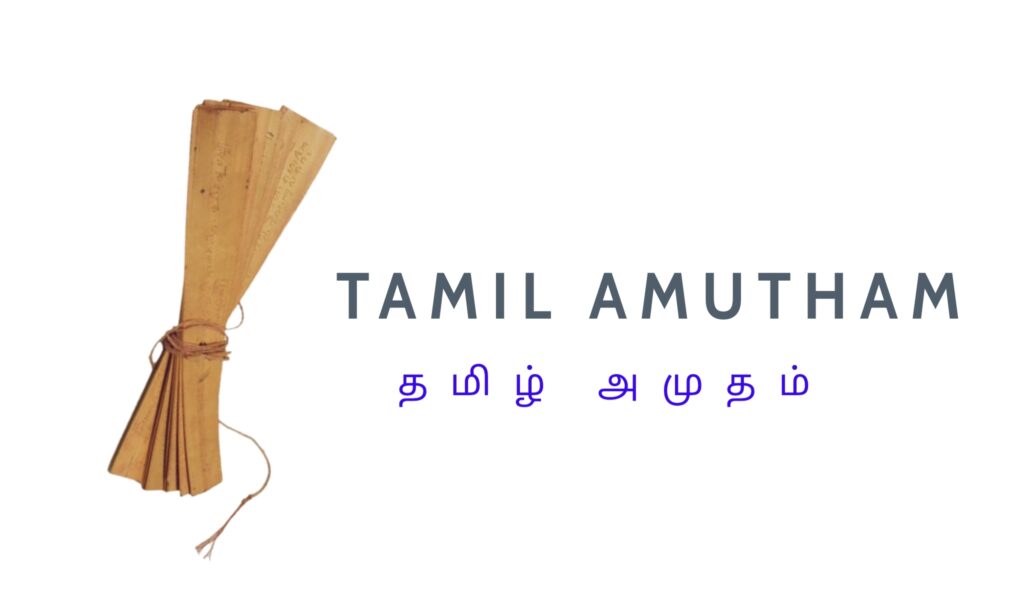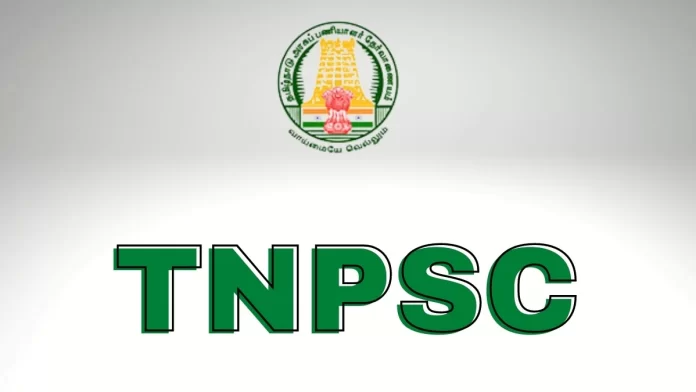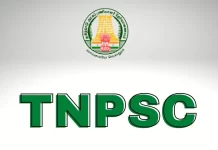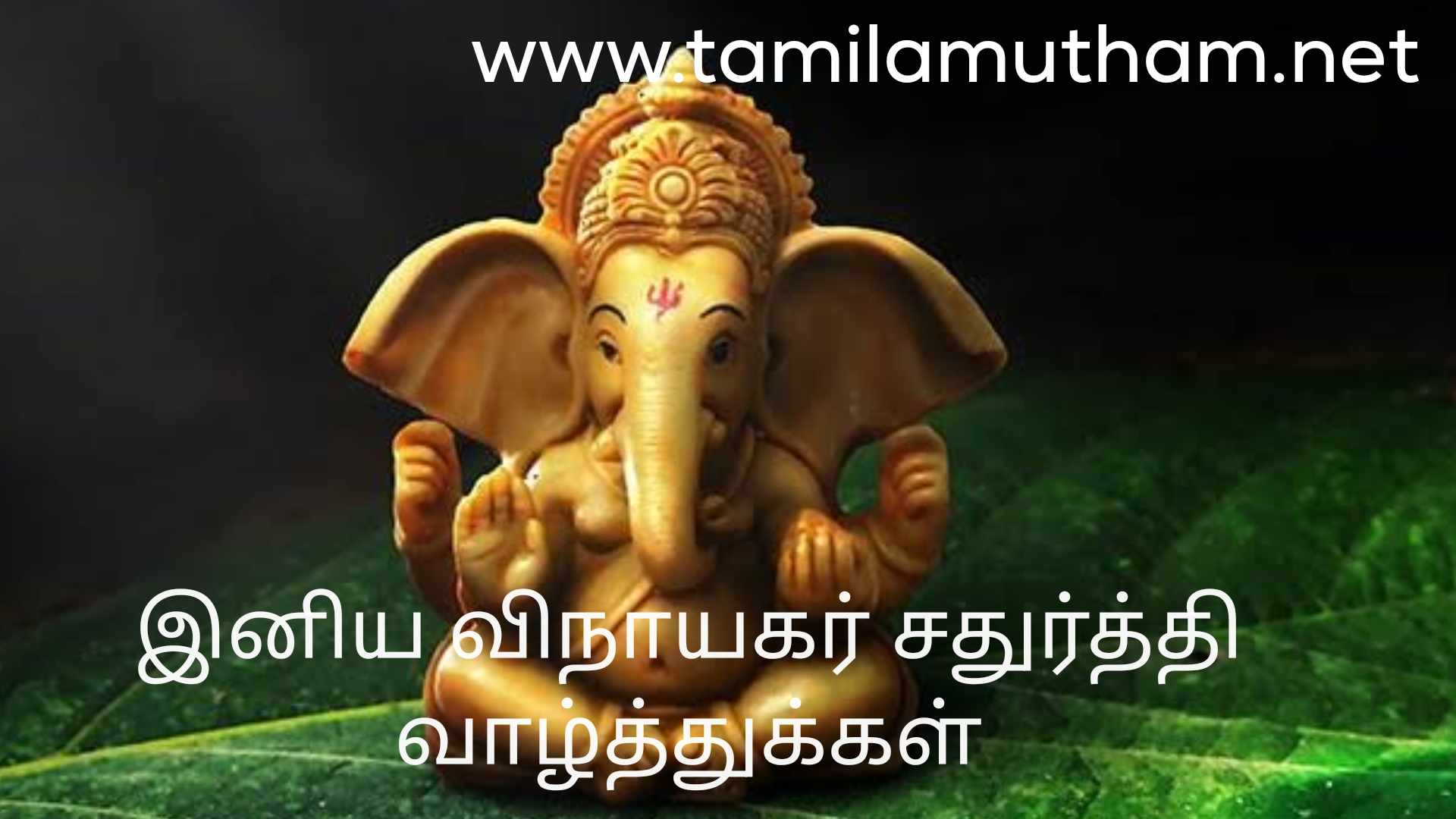NATIONAL PROGRAMME FOR ORGANIC PRODUCTION (NPOP) / கரிம உற்பத்திக்கான தேசிய திட்டம்
TAMIL
இயற்கை உணவு
- ஆர்கானிக் பண்ணை உற்பத்தி என்பது கரிம வேளாண்மையில் இருந்து பெறப்படும் விளைபொருட்களை குறிக்கிறது, அதே சமயம் கரிம உணவு என்பது கரிம உற்பத்திக்கான குறிப்பிட்ட தரநிலைகளின்படி உற்பத்தி செய்யப்பட்ட உணவுப் பொருட்களைக் குறிக்கிறது.
- FSSAI இன் படி, ‘ஆர்கானிக் விவசாயம்’ என்பது ரசாயன உரங்கள், பூச்சிக்கொல்லிகள் மற்றும் செயற்கை ஹார்மோன்கள் அல்லது மரபணு மாற்றப்பட்ட உயிரினங்கள் போன்ற செயற்கை வெளிப்புற உள்ளீடுகளைப் பயன்படுத்தாமல் விவசாய உற்பத்தியின் சுற்றுச்சூழல் அமைப்பை உருவாக்குவதற்கான பண்ணை வடிவமைப்பு மற்றும் மேலாண்மை அமைப்பு ஆகும்.
ஆர்கானிக் உணவு ஒழுங்குமுறை அமைப்பு
- இந்திய உணவு பாதுகாப்பு மற்றும் தர நிர்ணய ஆணையம் (FSSAI) நாட்டின் உணவு ஒழுங்குமுறை அமைப்பாகும், மேலும் உள்நாட்டு சந்தை மற்றும் இறக்குமதியில் கரிம உணவை ஒழுங்குபடுத்தும் பொறுப்பையும் கொண்டுள்ளது.
- FSSAI 2017 இல் உணவுப் பாதுகாப்பு மற்றும் தரநிலைகள் (ஆர்கானிக் உணவுகள்) விதிமுறைகள் மூலம் தற்போதுள்ள சான்றிதழ் முறையை அறிவித்தது.
கரிம உற்பத்திக்கான தேசிய திட்டம் (NPOP)
- மூன்றாம் தரப்பு சான்றிதழின் மூலம் NPOP இயற்கை விவசாய சான்றிதழை வழங்குகிறது.
- இது சான்றளிப்பு அமைப்புகளுக்கான அங்கீகாரத் திட்டம், கரிம உற்பத்திக்கான தரநிலைகள், இயற்கை விவசாயத்தை ஊக்குவித்தல் போன்றவற்றை உள்ளடக்கியது.
- இது வேளாண்மை மற்றும் பதப்படுத்தப்பட்ட உணவுப் பொருட்கள் ஏற்றுமதி மேம்பாட்டு ஆணையம் (APEDA), வர்த்தகம் மற்றும் தொழில் அமைச்சகத்தால் செயல்படுத்தப்படுகிறது.
- உற்பத்தி மற்றும் அங்கீகார அமைப்புக்கான NPOP தரநிலைகள், ஐரோப்பிய ஆணையம், சுவிட்சர்லாந்து மற்றும் அமெரிக்காவால் அந்தந்த அங்கீகார அமைப்புகளுக்குச் சமமானதாக அங்கீகரிக்கப்பட்டுள்ளன.
- தற்போது, கரிமப் பொருட்கள் ஏற்றுமதி செய்யப்படுகின்றன, அவை உற்பத்தி செய்யப்பட்டு, பதப்படுத்தப்பட்டு, பேக்கிங் செய்யப்பட்டு, கரிம உற்பத்திக்கான தேசிய திட்டத்தின் (NPOP) தேவைகளுக்கு ஏற்ப லேபிளிடப்படுகின்றன.
- NPOP அல்லது இந்தியாவிற்கான பங்கேற்பு உத்திரவாத அமைப்பு (PGS-இந்தியா) என்பது பொதுவான ஏற்றுமதிகளை சான்றளிப்பதற்கு வணிக அமைச்சகத்தின் கீழ் APEDA ஆல் நடத்தப்படும் ஒரு டாப்-டவுன் பொறிமுறையாகும்.
- NPOP 2001 இல் வெளிநாட்டு வர்த்தக (மேம்பாடு மற்றும் ஒழுங்குமுறைகள்) சட்டம், 1992 இன் கீழ் தொடங்கப்பட்டது.
இந்தியாவுக்கான பங்கேற்பு உத்திரவாத அமைப்பு (PGS)
- PGS என்பது ஆர்கானிக் பொருட்களை சான்றளிக்கும் மற்றொரு செயல்முறையாகும்.
- சான்றிதழ் ஆவணப்படுத்தப்பட்ட லோகோ அல்லது அறிக்கையின் வடிவத்தில் உள்ளது.
- இது வேளாண்மை மற்றும் விவசாயிகள் நல அமைச்சகத்தால் செயல்படுத்தப்படுகிறது.
- கரிம விவசாயிகள் சான்றிதழ் செயல்முறையின் மீது முழுக் கட்டுப்பாட்டைக் கொண்டுள்ளனர். PGS சான்றிதழ் என்பது விவசாயிகள் அல்லது ஒரு குழுவாகச் செயல்படக்கூடிய சமூகங்களுக்கு மட்டுமே. தனிப்பட்ட விவசாயிகள் அல்லது ஐந்து உறுப்பினர்களுக்கும் குறைவான விவசாயிகளின் குழுக்கள் PGS இன் கீழ் வராது.
- பயிர் உற்பத்தி, செயலாக்கம் மற்றும் கால்நடை வளர்ப்பு போன்றவற்றை உள்ளடக்கிய பண்ணை நடவடிக்கைகளுக்கு PGS பொருந்தும்.
- PGS விவசாயிகள் குழுவிலிருந்து விலகியுள்ள நபர்கள்/ஏஜென்சிகள் மூலம் சேமிப்பு, போக்குவரத்து மற்றும் மதிப்பு கூட்டல் நடவடிக்கைகள் போன்ற பண்ணைக்கு வெளியே செயலாக்க நடவடிக்கைகள் PGS இன் கீழ் வராது.
- ஆர்கானிக் உணவுகள் NPOP அல்லது PGS-இந்தியாவுடன் கூடுதலாக FSSAI இன் லேபிளிங்கின் தேவைகளுக்கு இணங்க வேண்டும்.
முக்கியத்துவம்
- ஐரோப்பிய ஒன்றியம் மற்றும் சுவிட்சர்லாந்தால் அங்கீகரிக்கப்பட்ட NPOP சான்றிதழானது, கூடுதல் சான்றிதழின் தேவையின்றி இந்த நாடுகளுக்கு பதப்படுத்தப்படாத தாவரப் பொருட்களை ஏற்றுமதி செய்ய இந்தியாவை அனுமதிக்கிறது.
- பிரெக்சிட்க்குப் பிந்தைய கட்டத்தில் கூட, ஐக்கிய இராச்சியத்திற்கு இந்திய ஆர்கானிக் பொருட்களை ஏற்றுமதி செய்வதற்கும் இது உதவுகிறது.
- இது உள்நாட்டு சந்தையில் கரிம பொருட்களின் வர்த்தகத்திற்காக இந்திய உணவு பாதுகாப்பு தர ஆணையத்தால் (FSSAI) அங்கீகரிக்கப்பட்டுள்ளது.
- NPOP உடனான இருதரப்பு ஒப்பந்தத்தின் கீழ் உள்ள ஆர்கானிக் பொருட்கள் இந்தியாவில் இறக்குமதி செய்வதற்கு மறுசான்றளிக்கப்பட வேண்டியதில்லை.
வேளாண்மை மற்றும் பதப்படுத்தப்பட்ட உணவுப் பொருட்கள் ஏற்றுமதி மேம்பாட்டு ஆணையம் (APEDA)
- APEDA சட்டம், 1985 இன் கீழ் நிறுவப்பட்ட இந்த ஆணையம், வர்த்தகம் மற்றும் தொழில்துறை அமைச்சகத்தின் கட்டுப்பாட்டின் கீழ் செயல்படுகிறது.
- திட்டமிடப்பட்ட தயாரிப்புகளின் ஏற்றுமதி மேம்பாடு மற்றும் மேம்பாடு ஆகியவற்றின் பொறுப்புடன் இது கட்டாயப்படுத்தப்பட்டுள்ளது. பழங்கள், காய்கறிகள் மற்றும் அவற்றின் தயாரிப்புகள், இறைச்சி பொருட்கள் மற்றும் கோழி பொருட்கள், பால் பொருட்கள் போன்றவை,
- சர்க்கரை இறக்குமதியை கண்காணிக்கும் பொறுப்பு இதில் ஒப்படைக்கப்பட்டுள்ளது.
ENGLISH
Organic Food
- Organic farm produce means the produce obtained from organic agriculture, while organic food means food products that have been produced in accordance with specified standards for organic production.
- According to FSSAI,’organic agriculture’ is a system of farm design and management to create an ecosystem of agriculture production without the use of synthetic external inputs such as chemical fertilisers, pesticides and synthetic hormones or genetically modified organisms.
Organic Food Regulatory System
- Food Safety and Standards Authority of India (FSSAI) is the food regulator in the country and is also responsible for regulating organic food in the domestic market and imports.
- FSSAI had notified the existing certification system through Food Safety and Standards (Organic Foods) Regulations in 2017.
National Programme for Organic Production (NPOP)
- NPOP grants organic farming certification through a process of third party certification.
- It involves the accreditation programme for Certification Bodies, standards for organic production, promotion of organic farming etc.
- It is implemented by Agricultural and Processed Food Products Export Development Authority (APEDA), Ministry of Commerce and Industry.
- The NPOP standards for production and accreditation system have been recognized by the European Commission, Switzerland and USA as equivalent to their respective accreditation systems.
- At present, organic products are exported provided they are produced, processed, packed and labelled as per the requirements of the National Programme for Organic Production (NPOP).
- The NPOP or the Participatory Guarantee System for India (PGS-India) is a top- down mechanism run by the APEDA under the Ministry of Commerce for certifying general exports.
- The NPOP came into inception in 2001 under the Foreign Trade (Development and Regulations) Act, 1992.
Participatory Guarantee System for India (PGS)
- PGS is another process of certifying organic products.
- The certification is in the form of a documented logo or a statement.
- It is implemented by the Ministry of Agriculture and Farmers’ Welfare.
- The organic farmers have full control over the certification process.
- PGS certification is only for farmers or communities that can organise and perform as a group.
- Individual farmers or groups of farmers smaller than five members are not covered under PGS.
- PGS is applicable on on-farm activities comprising of crop production, processing and livestock rearing, etc.
- Off-farm processing activities such as storage, transport and value addition activities by persons/agencies other than PGS farmers away from the group are not covered under PGS.
- Organic foods are also required to comply with the requirements of labelling of FSSAI in addition to that of NPOP or PGS-India.
Significance
- The NPOP certification recognized by the EU and Switzerland enables India to export unprocessed plant products to these countries without the requirement of additional certification.
- It also facilitates export of Indian organic products to the United Kingdom even in the post Brexit phase.
- It has also been recognized by the Food Safety Standard Authority of India (FSSAI) for trade of organic products in the domestic market.
- Organic products covered under the bilateral agreement with NPOP need not to be recertified for import in India.
Agricultural and Processed Food Products Export Development Authority (APEDA)
- This authority, which was established under the APEDA Act, 1985, functions under the control of Ministry of Commerce and Industry.
- It has been mandated with the responsibility of export promotion and development of the scheduled products viz. fruits, vegetables and their products, meat products and poultry products, dairy products, etc.,
- It has been entrusted with the responsibility to monitor import of sugar.
FORTALEZA DECLARATION / Fortaleza பிரகடனம்
TAMIL
- பிரேசில், ரஷ்யா, இந்தியா, சீனா மற்றும் தென்னாப்பிரிக்கா ஆகியவை பிரிக்ஸ் அமைப்பில் உருவாகும் ஐந்து வளர்ந்து வரும் பொருளாதாரங்கள் சுருக்க வரிசையில் அடங்கும்.
- 2009 முதல் ஒவ்வொரு ஆண்டும், இந்த நாடுகளின் அரசாங்கங்கள் பல முறையான உச்சிமாநாடுகளில் சந்தித்து வருகின்றன.
- 6வது BRICS உச்சிமாநாடு 2014 இல் நடைபெற்றது.
- இந்த உச்சிமாநாட்டை நடத்தும் நகரம் பிரேசிலில் உள்ள Fortaleza ஆகும்.
Fortaleza பிரகடனத்தின் விவரங்கள்
- Fortaleza பிரகடனம் BRICS உடன் தொடர்புடைய ஐந்து நாடுகளின் விவகாரங்களுடன் தொடர்புடையது.
- Fortaleza பிரகடனத்தின் ஒரு பகுதியாக, இந்த நாடுகள் பொருளாதார ஸ்திரப்படுத்தலுக்கான ஆதாரங்களைக் கொண்டு வர நாடுகளை அனுமதிக்க 100 பில்லியன் டாலர் புதிய வளர்ச்சி வங்கியை (NDB) உருவாக்க ஒப்புக்கொண்டன.
- BRICS உடன் தொடர்புடைய நாடுகளின் முதலீடுகள் மூலம் $100 பில்லியன் அளவுக்கு இருப்புக்களை பெறுவது தொடர்பான திட்டங்களும் கொண்டு வரப்பட்டன.
- இந்த பிரகடனத்தின் முக்கிய உறுப்புகளில் ஒன்று பிரிக்ஸ் நாடுகளின் ஏற்றுமதி கடன் முகமைகளின் ஒத்துழைப்புக்கான ஒப்பந்தத்தில் கையெழுத்திடும் வடிவத்தில் வந்தது.
- ABGF (பிரேசிலுக்கான), EXIAR (ரஷ்யாவிற்கு), ECGC (இந்தியாவிற்கு), ECIC (தென்னாப்பிரிக்காவிற்கு) மற்றும் SINOSURE (சீனாவிற்கு) ஆகியவை இந்த நாடுகளின் ஏற்றுமதி கடன் முகமைகளாகும்.
- இது Fortaleza பிரகடனத்தின் முக்கிய புள்ளிகளில் ஒன்றாகக் குறிக்கப்பட்டுள்ளது, இது UPSC 2022க்கு மேலும் அதிக முக்கியத்துவம் வாய்ந்ததாக இருக்கும்.
- Fortaleza Declaration UPSC பாடத்திட்டத்தின் ஒரு பகுதியாக, சர்வதேச நாணய நிதியம் (IMF) மீது ஐந்து நாடுகள் காட்டும் ஏமாற்றம் மிகுந்த முக்கியத்துவம் வாய்ந்ததாக இருக்கும். சர்வதேச நாணய நிதியத்தின் 2010 சீர்திருத்தங்களை அப்போது செயல்படுத்தாதது குறித்து நாடுகள் மிகுந்த ஏமாற்றத்தையும் கவலையையும் காட்டியுள்ளன.
- இது சர்வதேச நாணய நிதியத்தின் நம்பகத்தன்மை, செயல்திறன் மற்றும் சட்டபூர்வமான தன்மையில் நேரடியான எதிர்மறையான தாக்கத்தை ஏற்படுத்தியதாக அந்த நாடுகள் குறிப்பிட்டுள்ளன.
புதிய வளர்ச்சி வங்கி
- Fortaleza பிரகடனத்தில், 5 BRICS உறுப்பு நாடுகள் 100 பில்லியன் அமெரிக்க டாலர் மதிப்பிலான புதிய வளர்ச்சி வங்கியை (NDB) உருவாக்க முடிவு செய்துள்ளன.
- உறுப்பு நாடுகளின் நிதி நலன்களின் பிரதிநிதியாக புதிய வளர்ச்சி வங்கியை வடிவமைக்க ஐந்து நாடுகளும் ஒப்புக்கொண்டன.
- இந்த உச்சிமாநாட்டின் போது ஷாங்காயில் தலைமையகத்தை நடத்துவதற்கான முன்மொழிவும் முன்வைக்கப்பட்டது.
- இந்த நிதி நிறுவனத்தின் முதல் தலைவர் இந்தியாவைச் சேர்ந்தவர் என்று உறுப்பு நாடுகளால் முடிவு செய்யப்பட்டது.
- NDB இன் முதல் பிராந்திய அலுவலகத்தை ஜோகன்னஸ்பர்க்கில் உருவாக்க உறுப்பு நாடுகள் ஒப்புக்கொண்டன. கவர்னர்கள் குழுவைப் பிரதிநிதித்துவப்படுத்தும் தொடக்கத் தலைவர் ரஷ்யாவிலிருந்து தயாரிக்க ஒப்புக்கொண்டார்.
- இயக்குநர்கள் குழுவைப் பிரதிநிதித்துவப்படுத்தும் முதல் தலைவர் பிரேசிலைச் சேர்ந்தவர் என்றும் முடிவு செய்யப்பட்டது. ஜனாதிபதி பதவி ஐந்தாண்டு காலத்திற்கு உருவாக்கப்படும் மற்றும் பிரிக்ஸ் உடன் தொடர்புடைய நாடுகளிடையே மேலும் சுழற்சி செய்யப்படும்.
- புதிய வளர்ச்சி வங்கியை உருவாக்குவது குறித்து பிரிக்ஸ் அமைப்பின் உறுப்பு நாடுகளின் மீது போர்டலேசா பிரகடனம் சமமான பொறுப்பு மற்றும் அதிகாரத்தை கொண்டிருந்தது என்பது நிச்சயமாகத் தெளிவாகத் தெரிந்தது.
Fortaleza பிரகடனங்களின் ஒரு பகுதியாக இருதரப்பு சந்திப்புகள்
- ஃபோர்டலேசா உச்சிமாநாட்டின் போது, ஷாங்காய் ஒத்துழைப்பு அமைப்பின் விரிவாக்கத்திற்கு சீனா விருப்பம் உள்ளதாக நரேந்திர மோடியிடம் (இந்தியப் பிரதமர்) ஷி ஜின்பிங் (சீன மக்கள் குடியரசுத் தலைவர்) உறுதியளித்தார்.
ENGLISH
- The five emerging economies that form the BRICS include Brazil, Russia, India, China and South Africa, in the order of the acronym.
- Every year since 2009, the governments of these countries have met in several formal summits.
- The 6th BRICS summit was held in 2014. The host city for this summit was Fortaleza in Brazil.
Details of the Fortaleza Declaration
- The Fortaleza Declaration is related to the affairs of the five countries associated with the BRICS. As a part of the Fortaleza Declaration, these countries agreed on creating a US$100 billion New Development Bank (NDB) to allow the countries to bring in resources for economic stabilisation.
- Plans were also brought up regarding acquiring reserves amounting to $100 billion through investments made by the countries associated with the BRICS.
- One of the major organs of this declaration came up in the form of signing an agreement for the cooperation of the export credit agencies of the BRICS nations.
- The export credit agencies of these nations are ABGF (for Brazil), EXIAR (for Russia), ECGC (for India), ECIC (for South Africa), and SINOSURE (for China). This is marked as one of the major points of the Fortaleza Declaration, which will further be of immense importance for the UPSC 2022.
- As a part of the Fortaleza Declaration UPSC syllabus, the disappointment shown by the five countries towards the International Monetary Fund (IMF) will be of immense importance.
- The countries have shown much disappointment and concern towards the then non-implementation of the 2010 reforms of the International Monetary Fund. The countries did mention that this had had a direct negative impact on the IMF’s credibility, effectiveness and legitimacy.
The New Development Bank
- In the Fortaleza Declaration, the 5 BRICS member states had decided on creating the New Development Bank (NDB) worth US$100 billion. The five countries agreed on designing the New Development Bank as a representative of the financial interests of the member states.
- The proposal for the headquarters to be held in Shanghai was also made during this summit. It was decided by the member states that the first president of this financial institution would be from India.
- The member states had also agreed on making the first regional office of the NDB at Johannesburg. The inaugural chairman representing the board of governors was agreed upon to be made from Russia.
- It was also decided that the first chairman representing the board of directors would be from Brazil. The presidency post will be made for five years’ terms and will be further rotated among the countries associated with the BRICS.
- It was certainly clear that the Fortaleza Declaration had had an equal share of responsibility and power on the member states of the BRICS about the formation of the New Development Bank.
- The NDB will cover some of the most important questions as a part of the UPSC Notes. In the exams to follow, this will be of absolute significance in the context of the Fortaleza Declaration.
Bilateral Meetings as a Part of the Fortaleza Declarations
- During the Fortaleza Summit, Xi Jinping (President of the People’s Republic of China) assured Narendra Modi (Prime Minister of India) that there was a willingness on the part of China for the expansion of the Shanghai Cooperation Organization so as to include India to be a full member of the SCO summit of 2014.
AYUSHMAN BHARAT PROGRAMME / ஆயுஷ்மான் பாரத் திட்டம்
TAMIL
- ஆயுஷ்மான் பாரத் திட்டம் 2018 இல் தொடங்கப்பட்டது – முதன்மை, இரண்டாம் நிலை மற்றும் மூன்றாம் நிலை – அனைத்து நிலைகளிலும் உள்ள சுகாதாரப் பிரச்சினைகளைத் தீர்க்க. இது இரண்டு கூறுகளைக் கொண்டுள்ளது:
- பிரதான் மந்திரி ஜன் ஆரோக்கிய யோஜனா (PM-JAY), முன்பு தேசிய சுகாதார பாதுகாப்பு திட்டம் (NHPS) என அறியப்பட்டது.
- உடல்நலம் மற்றும் ஆரோக்கிய மையங்கள் (HWCs)
- ஆயுஷ்மான் பாரத் என்பது மருத்துவக் காப்பீடு மற்றும் முதன்மை, இரண்டாம் நிலை மற்றும் மூன்றாம் நிலை சுகாதாரப் பாதுகாப்பு ஆகியவற்றை உள்ளடக்கிய ஒரு ஒருங்கிணைந்த அணுகுமுறையாகும்.
- HWCகள் முதன்மை மட்டத்தில் மலிவான மற்றும் தரமான சுகாதார சேவைகளுக்கான அணுகலை மேம்படுத்துவதை நோக்கமாகக் கொண்டுள்ளன. இரண்டாம் நிலை மற்றும் மூன்றாம் நிலை நிலைகளில் சுகாதார சேவைகளைப் பெறுவதற்கான நிதிப் பாதுகாப்பை PM-JAY உள்ளடக்கும்.
- ஆயுஷ்மான் பாரத் என்பது 50 கோடிக்கும் அதிகமான பயனாளிகளைக் கொண்ட உலகின் மிகப்பெரிய அரசு நிதியுதவி பெறும் சுகாதாரத் திட்டமாகும். இதற்கு ‘மோடிகேர்’ எனப் பெயரிடப்பட்டுள்ளது.
ஆயுஷ்மான் பாரத் தேவை
- தேசிய மாதிரி ஆய்வு அலுவலகத்தின் (NSSO) 71வது சுற்று, நாட்டின் சுகாதார அமைப்பு பற்றிய பல மோசமான எண்களை வெளிப்படுத்தியது.
- சுமார் 86% கிராமப்புற குடும்பங்களுக்கும், 82% நகர்ப்புற குடும்பங்களுக்கும் மருத்துவ காப்பீட்டுக்கான அணுகல் இல்லை.
- நாட்டின் மக்கள்தொகையில் 17% க்கும் அதிகமானோர் தங்கள் குடும்ப வரவு செலவுத் திட்டத்தில் குறைந்தபட்சம் 1/10-ஐ சுகாதார சேவைகளைப் பெறச் செலவிடுகின்றனர்.
- எதிர்பாராத மற்றும் தீவிரமான உடல்நலப் பிரச்சனைகள் பெரும்பாலும் குடும்பங்களை கடனுக்கு இட்டுச் செல்கின்றன.
- நகர்ப்புற மற்றும் கிராமப்புற குடும்பங்களில் முறையே 19% மற்றும் 24% க்கும் அதிகமான குடும்பங்கள் கடன் மூலம் தங்கள் சுகாதார நிதி தேவைகளை பூர்த்தி செய்கின்றன.
- இந்த பாரதூரமான கவலைகளை நிவர்த்தி செய்ய, தேசிய சுகாதாரக் கொள்கை 2017ன் கீழ், அரசாங்கம் அதன் இரண்டு துணைப் பணிகளான PMJAY மற்றும் HWCகளுடன் இணைந்து ஆயுஷ்மான் பாரத் திட்டத்தைத் தொடங்கியது.
பிரதான் மந்திரி ஜன் ஆரோக்கிய யோஜனா (PM-JAY)
- PMJAY இந்தியாவின் மிகவும் லட்சியமான சுகாதாரத் துறை திட்டங்களில் ஒன்றாகும்.
- இது தேசிய சுகாதார பாதுகாப்பு இயக்கம் என தொடங்கப்பட்டு பின்னர் பெயர் மாற்றப்பட்டது.
- இது உலகிலேயே அரசாங்கத்தால் நிதியளிக்கப்படும் மிகப்பெரிய மருத்துவக் காப்பீட்டுத் திட்டமாகும்.
- இந்தத் திட்டம் தகுதியான குடும்பங்களுக்கு ரூ. காப்பீட்டுத் தொகையை வழங்குகிறது. ஒரு குடும்பத்திற்கு ஆண்டுக்கு 5 லட்சம்.
- இந்தத் தொகையானது அனைத்து இரண்டாம் நிலை மற்றும் மூன்றாம் நிலை பராமரிப்பு செலவினங்களை ஈடுசெய்யும் நோக்கம் கொண்டது.
- யாரும் பின்தங்கியிருக்கக் கூடாது என்பதை உறுதி செய்வதற்காக, திட்டத்தின் கீழ் குடும்ப அளவு மற்றும் வயதுக்கு எந்த வரம்பும் இல்லை.
- காப்பகத்தில் மருத்துவமனைக்குச் செல்லும் முன் மற்றும் பிந்தைய செலவுகள் அடங்கும். இது ஏற்கனவே இருக்கும் அனைத்து நிபந்தனைகளையும் உள்ளடக்கும்.
- 3 நாட்களுக்கு முன் மருத்துவமனையில் சேர்க்கப்படும் மற்றும் 15 நாட்களுக்குப் பிந்தைய மருத்துவமனைக்கு மருந்துகள் மற்றும் நோய் கண்டறிதல் போன்றவை வழங்கப்படும்.
- பயனாளி ஒரு மருத்துவமனைக்கு வரையறுக்கப்பட்ட போக்குவரத்து கொடுப்பனவையும் பெறுவார்.
- பயனாளிகள் நாட்டில் எங்கிருந்தும் எம்பேனல் செய்யப்பட்ட எந்த மருத்துவமனையிலிருந்தும் பணமில்லா சிகிச்சையைப் பெறலாம். இதில் அரசு மற்றும் தனியார் மருத்துவமனைகளும் அடங்கும். முன்னிருப்பாக, இத்திட்டத்தை செயல்படுத்தும் மாநிலங்களில் உள்ள அனைத்து அரசு மருத்துவமனைகளும் எம்பனெல் செய்யப்படும்.
PM-JAY நன்மைகள்
- PM-JAY என்பது ஒரு தொலைநோக்கு திட்டமாகும், இது யுனிவர்சல் ஹெல்த் கவரேஜ் (UHC) என்ற கருத்தை நிறைவேற்றுவதை நோக்கமாகக் கொண்டுள்ளது. இது பல நன்மைகளை வழங்குகிறது, அவை கீழே விவாதிக்கப்படும்.
- இது பல குடும்பங்களுக்கு மருத்துவச் செலவைக் குறைக்கும், இது தற்போது, பெரும்பாலும் பாக்கெட்டுக்கு வெளியே செலவாகும். தகுதியுள்ள குடும்பங்கள் கடனில் சிக்காமல் தரமான மருத்துவ சேவைகளைப் பெறலாம்.
- இந்தத் திட்டத்தால் வழங்கப்படும் காப்பீட்டுத் தொகையானது நிலையான மருத்துவக் கோரிக்கைகளிலிருந்து (உதாரணமாக, ஏற்கனவே இருக்கும் நிலைமைகள், உள் பிறவி நோய்கள் மற்றும் மனநல நிலைமைகள்) பொதுவாக விலக்கப்பட்ட பொருட்களை உள்ளடக்கியது.
- இத்திட்டத்திற்கு மருத்துவமனைகள் குறிப்பிட்ட குறைந்தபட்ச தரத்தை பராமரிக்க வேண்டும்.
- காப்பீட்டாளர்கள் மற்றும் மூன்றாம் தரப்பு நிர்வாகிகள் திட்டத்தின் காரணமாக திறக்கப்படும் பெரிய புதிய சந்தைக்கான அணுகலைப் பெறுவார்கள்.
- இந்தத் திட்டம் இந்தியாவின் சுகாதார அமைப்பில் பரந்த சீர்திருத்தங்களைத் தொடங்கும் திறனைக் கொண்டுள்ளது.
- திட்டம் தொடங்கி ஓராண்டுக்குப் பிறகு, பயனாளி குடும்பங்கள் ரூ.13000 கோடிக்கு மேல் சேமித்ததாகக் கூறப்படுகிறது.
- 60 சதவீதத்துக்கும் அதிகமான சிகிச்சைகள் தனியார் மருத்துவமனைகளால் செய்யப்பட்டுள்ளன. இந்தத் திட்டத்தில் தனியார் துறை முக்கிய பங்கு வகித்ததுடன், அவர்களும் இதன் மூலம் பயனடைந்துள்ளனர். பல அடுக்கு II மற்றும் III நகரங்களில், தனியார் மருத்துவமனைகள் அதிகரித்து வருவதைக் காண்கின்றன.
- சமூகத்தில் பொருளாதார ரீதியாக நலிவடைந்த பிரிவினர் நிதி நெருக்கடியின்றி தரமான சுகாதார சேவைகளை அணுக முடியும்.
- மேலும் இத்திட்டம் அதிக வேலை வாய்ப்புகளை உருவாக்கியுள்ளது. 2018 இல், இது 50000 க்கும் மேற்பட்ட வேலைகளை உருவாக்கியது. 2022 ஆம் ஆண்டிற்குள் 1.5 லட்சம் HWCகளை உருவாக்க அரசாங்கம் திட்டமிட்டுள்ளதால் இந்த எண்ணிக்கை அதிகரிக்கும் என எதிர்பார்க்கப்படுகிறது.
- 90% வேலைகள் சுகாதாரத் துறையிலும் மீதமுள்ளவை காப்பீடு போன்ற தொடர்புடைய துறைகளிலும் உள்ளன.
- இந்தத் திட்டம் வலுவான தகவல் தொழில்நுட்ப கட்டமைப்பால் ஆதரிக்கப்படுகிறது.
- பயனாளிகளை அடையாளம் காணுதல், சிகிச்சை பதிவுகளை பராமரித்தல், கோரிக்கைகளை செயலாக்குதல், குறைகளை நிவர்த்தி செய்தல் போன்றவற்றை ஐடி ஆதரிக்கிறது.
- மத்திய மற்றும் மாநில அளவில் மோசடி கண்டறிதல், தடுப்பு மற்றும் கட்டுப்பாட்டு அமைப்பு உள்ளது, இது மோசடியைத் தடுப்பதில் முக்கியமானது.
PM-JAY விமர்சனங்கள்
- PM-JAY செயல்படுத்துவதில் சில விமர்சனங்களும் சவால்களும் உள்ளன. அவை சுருக்கமாக கீழே விவரிக்கப்பட்டுள்ளன.
- PM-JAYக்கான நிதி ஒதுக்கீடு அபரிமிதமாக அதிகரித்துள்ள நிலையில், தேசிய ஊரக சுகாதார இயக்கத்திற்கான (NRHM) நிதி 2% மட்டுமே உயர்ந்துள்ளது என்ற விமர்சனம் உள்ளது. எனவே, இத்திட்டம் NRHMக்கான நிதியில் தின்று கொண்டிருக்கிறது.
- இந்த திட்டத்தின் கீழ், மக்களுக்கு ஆரம்ப சுகாதார சேவையை வழங்குவதில் தனியாருக்கு பெரும் பங்கு வழங்கப்பட்டுள்ளது. தனியார் துறையின் கட்டுப்பாடு மிகக் குறைவாக இருப்பதால், இதற்கு பல்வேறு மாநிலங்களில் பலர் எதிர்ப்புத் தெரிவித்து வருகின்றனர்.
- இது போன்ற ஒரு பரந்த திட்டத்தை செயல்படுத்த தேவையான சுகாதார நிபுணர்கள் மற்றும் பணியாளர்கள் பற்றாக்குறை உள்ளது.
- பல ஆரம்ப சுகாதார நிலையங்கள் மின்சாரம், சீரான குடிநீர் உள்ளிட்ட அடிப்படை வசதிகள் கூட இல்லாமல் இயங்குவதால் உள்கட்டமைப்பு பிரச்னையும் உள்ளது.
- ஒழுங்கமைக்கப்பட்ட துறையின் கீழ் வரும் பொருளாதார ரீதியாக நலிவடைந்த பிரிவினர் மற்றும் சுகாதார காப்பீட்டுக்கான அணுகல் இல்லாதவர்கள் இந்தத் திட்டம் விலக்கப்பட்டுள்ளது.
முன்னோக்கிய பாதை
- பொதுத்துறை உள்கட்டமைப்பை தொடர்ந்து மேம்படுத்துவதன் மூலம், உலகளாவிய சுகாதார பாதுகாப்புக்கான சாலை வரைபடத்தை உருவாக்குவதே முதல்-வரிசை முன்னுரிமையாக இருக்க வேண்டும்.
- தூய்மையான குடிநீர், சுகாதாரம், குப்பைகளை அகற்றுதல், கழிவு மேலாண்மை, உணவுப் பாதுகாப்பு, ஊட்டச்சத்து மற்றும் நோய்த் தொற்றுக் கட்டுப்பாடு ஆகியவற்றுக்கான அணுகலை வழங்குவதன் மூலம் நோய்ச் சுமையைக் குறைக்க, சுகாதாரம் மற்றும் மேம்பாட்டை இணைக்கும் அனைத்து துறைகளுக்கிடையேயான அனைத்து நடவடிக்கைகளும் ஒன்றிணைக்கப்பட வேண்டும். ஆயுஷ்மான் பாரத் திட்டத்தில் ஸ்வச் பாரத் திட்டத்தை இணைப்பது அதை நோக்கி ஒரு படியாக இருக்கும்.
- மாவட்ட மருத்துவமனைகளை அரசு மருத்துவக் கல்லூரிகளாகவும், போதனா மருத்துவமனைகளாகவும் தரம் உயர்த்துவது மாவட்ட அளவில் திறன்களை மேம்படுத்தும். நல்ல நிர்வாகத்தின் நடைமுறையைப் பின்பற்றுவதற்கு சேவை வழங்குநர்களை இணைத்துக்கொள்வதன் மூலம் அவர்களின் முடிவில் செலவு மற்றும் தரத்திற்கான பொறுப்புணர்வை பராமரிக்க முடியும்.
- தொழில்நுட்பம் மற்றும் புதுமைகளை நன்றாகப் பயன்படுத்துவதன் மூலம் ஒட்டுமொத்த சுகாதாரச் செலவைக் குறைக்க முடியும். AI-இயக்கப்படும் மொபைல் பயன்பாடுகள் உயர்தர, குறைந்த விலை, நோயாளியை மையமாகக் கொண்ட, ஸ்மார்ட் ஆரோக்கிய தீர்வுகளை வழங்க முடியும். ஆயுஷ்மான் பாரதத்திற்கான அளவிடக்கூடிய மற்றும் இயங்கக்கூடிய ஐடி தளம் இந்த திசையில் ஒரு நேர்மறையான படியாகும்.
ENGLISH
- The Ayushman Bharat programme was launched in 2018 to address health issues at all levels – primary, secondary, and tertiary. It has two components:
- Pradhan Mantri Jan Arogya Yojana (PM-JAY), earlier known as the National Health Protection Scheme (NHPS)
- Health and Wellness Centres (HWCs)
- Ayushman Bharat is an integrated approach comprising health insurance and primary, secondary and tertiary healthcare.
- The HWCs are aimed at improving access to cheap and quality healthcare services at the primary level. PM-JAY will cover the financial protection for availing healthcare services at the secondary and tertiary levels.
- Ayushman Bharat is the largest government-funded healthcare programme in the world with over 50 crore beneficiaries. It has been dubbed ‘Modicare’.
Need for Ayushman Bharat
- The 71st round of the National Sample Survey Office (NSSO) revealed many grim numbers about the country’s healthcare system.
- About 86% of rural households and 82% of urban households do not have access to healthcare insurance.
- Over 17% of the country’s population spend a minimum of 1/10th of their household budgets on availing health services.
- Unexpected and serious healthcare problems often lead families to debt.
- Over 19% and over 24% of the urban and rural households respectively meet their healthcare financial needs through borrowings.
- To address these grave concerns, the government, under the National Health Policy 2017, launched the Ayushman Bharat programme along with its two sub-missions, PMJAY and HWCs.
Pradhan Mantri Jan Arogya Yojana (PM-JAY)
- PMJAY is one of India’s most ambitious health sector schemes.
- It was launched as the National Health Protection Mission and renamed later.
- It is the largest government-funded health insurance scheme in the world.
- The scheme offers eligible families an insurance cover of Rs. 5 lakh per annum per family.
- This amount is intended to cover all secondary and most tertiary care expenditures incurred.
- There is no cap on family size and age under the scheme, to ensure that nobody is left behind.
- The cover will include pre and post-hospitalization expenses. It will also cover all pre-existing conditions.
- 3 days of pre-hospitalization and 15 days of post-hospitalization like medicines and diagnostics are covered.
- The beneficiary will also receive a defined transport allowance per hospital.
- The beneficiaries can take cashless treatment from any empanelled hospital anywhere in the country. This includes both public and private hospitals. By default, all government hospitals in the states that are implementing the scheme will be empanelled.
PM-JAY Benefits
- PM-JAY is a visionary scheme that aims at the fulfilment of the concept of Universal Health Coverage (UHC).
- It will reduce medical expenditure for many families, which is currently, mostly out-of-the-pocket expense. Eligible families can avail of quality medical services without getting into debt.
- The insurance cover provided by this scheme includes items that are generally excluded from standard medi-claims (for example, pre-existing conditions, internal congenital diseases, and mental health conditions).
- The scheme requires hospitals to maintain a certain minimum standard.
- Insurers and third-party administrators will have access to the large new market that opens up because of the scheme.
- The scheme has the potential to initiate wide reforms in India’s healthcare system.
- After one year of the scheme’s beginning, beneficiary families are said to have saved over Rs.13000 crores.
- Over 60% of the treatments have been done by private hospitals. The private sector has played an active role in this scheme and they have also benefitted from it. In many tier II and III cities, private hospitals have observed increased footfall.
- Economically weaker sections of society can have access to quality healthcare services without financial hardships.
- The scheme has also resulted in the creation of more jobs. In 2018, it generated more than 50000 jobs. This number is expected to increase as the government is planning to build 1.5 lakh HWCs by 2022.
- 90% of the jobs are in the health sector and the remaining in allied sectors like insurance.
- The scheme is supported by a robust IT framework.
- IT supports beneficiary identification, maintaining treatment records, processes claims, addresses grievances, etc.
- There is fraud detection, prevention, and control system at both the central and state levels, which is critical for preventing fraud.
PM-JAY Criticisms
- There has been a criticism that while the allocation of funds for PM-JAY has increased exponentially, the fund for the National Rural Health Mission (NRHM) has gone up only by 2%. So, the scheme has been eating into the funds for NRHM.
- Under this scheme, the private sector has been given a large role in offering primary health care to the people. This has been protested by many people in various states, as regulation of the private sector is marginal.
- There is a shortfall of healthcare professionals and personnel needed to implement a vast scheme as this.
- There is also a problem of infrastructure as many primary healthcare centres run without even the basic facilities such as electricity, regular water supply, etc.
- The scheme excludes those economically weaker sections that fall under the organized sector and have no access to health insurance.
Way Forward
- The first-order priority should be to draw up a roadmap for universal health coverage, through continuous upgradation of the public sector infrastructure.
- All relevant inter-sectoral action linking health and development should be brought together in order to bring down the disease burden by providing access to clean drinking water, sanitation, garbage disposal, waste management, food security, nutrition, and vector control. Incorporation of Swachh Bharat programme into Ayushman Bharat can be one step towards it.
- Upgrading district hospitals to government medical colleges and teaching hospitals will enhance capacities at the district level. Roping in the service providers to follow the practice of good governance can maintain accountability for cost and quality on their end.
- Making good use of technology and innovation can further reduce the overall cost of the healthcare. AI-powered mobile applications can provide high-quality, low-cost, patient-centric, smart wellness solutions. The scaleable and inter-operable IT platform for the Ayushman Bharat is a positive step in this direction.














